This much-loved family home is a celebration of old and new. It’s been in the family for four years shy of half a century. The empty-nester septuagenarians decided it was time to reinvigorate their home. Enter award-winning FIGR. architecture studio and the rest, as they say, is history.
The renovated home showcases a series of well-appointed spaces that off er clever connectivity and seamless transitions from one space to the next. FIGR. architecture studio’s Michael Artemenko and Adi Atic have created an artful infusion of modern design elements that work well with what remained to create a beautiful family home. The client’s brief was to construct a transient multigenerational dwelling. “There was a desire to prioritise modern comforts and create a series of adaptable spaces that could easily be transformed for a growing number of grandchildren,” they say.
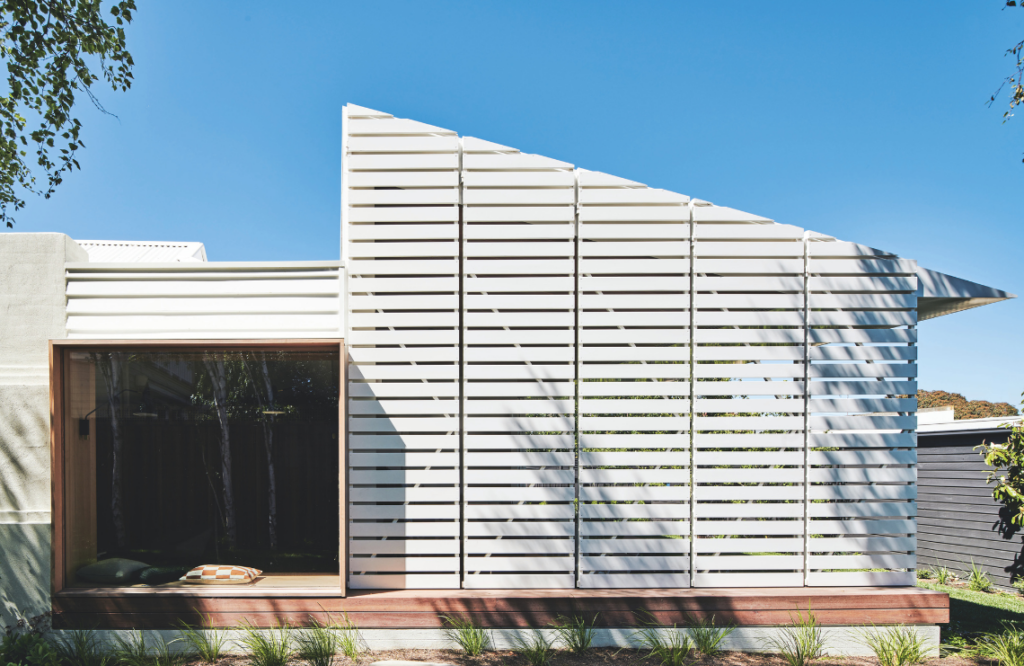
The homeowners have a deep sense of community and love of family. They wanted to invest in the architecture of their home and remain in their current locale. Through innovative design and flexible living spaces, FIGR. has designed a home that can adapt to the clients’ changing needs.
The footprint of the house is largely unchanged, with a few modifications to bathrooms and kitchen. A walk-in robe was also added. The layout is made up of main bedroom, ensuite, multipurpose room/study, lounge, laundry, pantry, kitchen, dining, living, bedrooms one and two and bathroom, along with a covered outdoor and entertainment area.
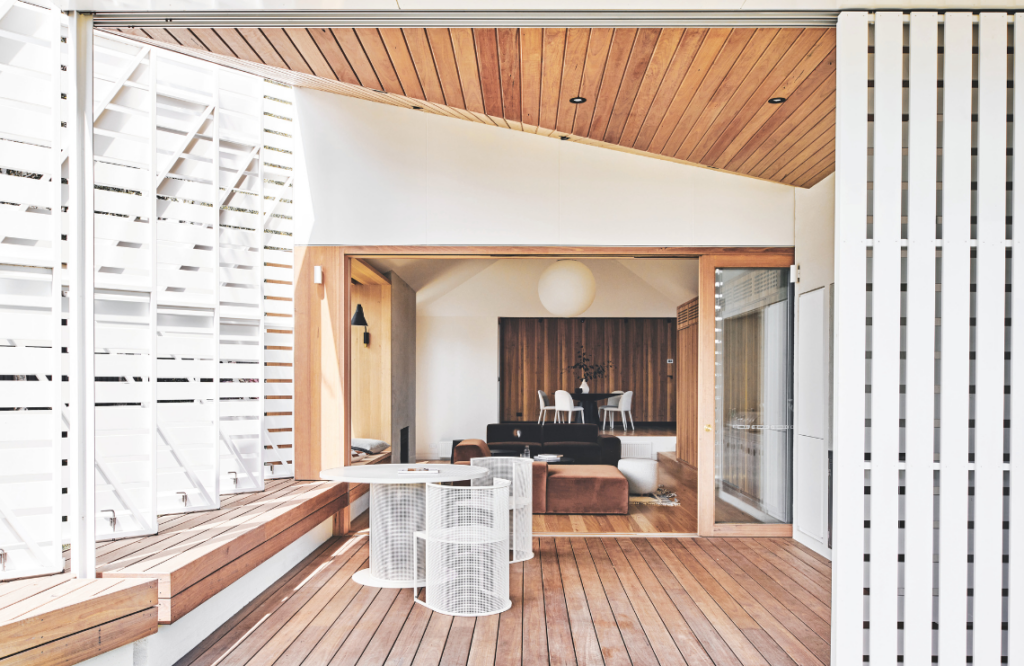
The walls of joinery open up to reveal spaces beyond. Michael and Adi note that this continues through to the outdoor entertaining area. “It can move from a sheltered, incredibly private zone to an open extension of the garden through the use of sliding and hinged screening,” they point out.
With plenty of spaces and platforms that step out into the gardens, there are ample opportunities to connect with nature in a very meaningful way. Green spaces are filled with an abundance of leafy produce and herbs. FIGR. says the clients wanted to add home-grown harvest to their cooking. “They also wanted to provide hidden learning for their grandchildren about gardening and cooking through adventures in the garden,” the duo say. Hidden within the garden are rainwater tanks for harvesting water to keep green spaces thriving.
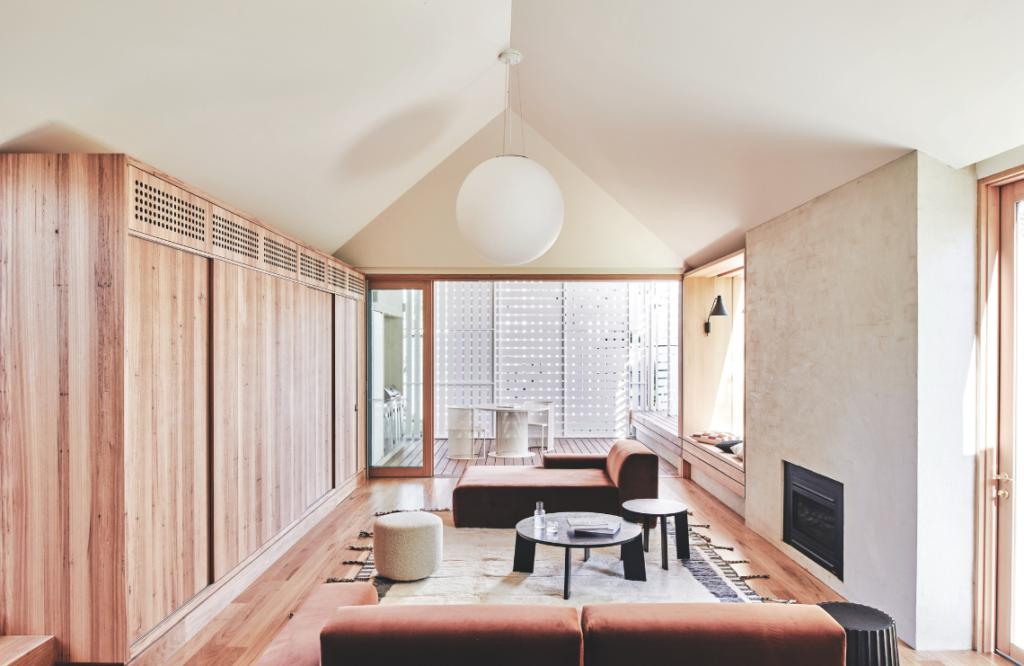
A minimalist approach in addressing materiality and form was incorporated. The designers note the undulating roof forms are a direct response to the local fine-grain residential context of the site. “The raked underside displaces generous ceiling heights above the main living areas,” they add.
Stepping into the warm and welcoming living spaces, a feeling of expansiveness prevails. It’s comfortable and ideal for large family gatherings, a home that is perfect for generations to share lasting memories. Natural materials such as Australian-sourced hardwoods were incorporated, marble features in the benchtop, high-performance windows with double glazing were included, and hydronic heating added to improve thermal comfort.
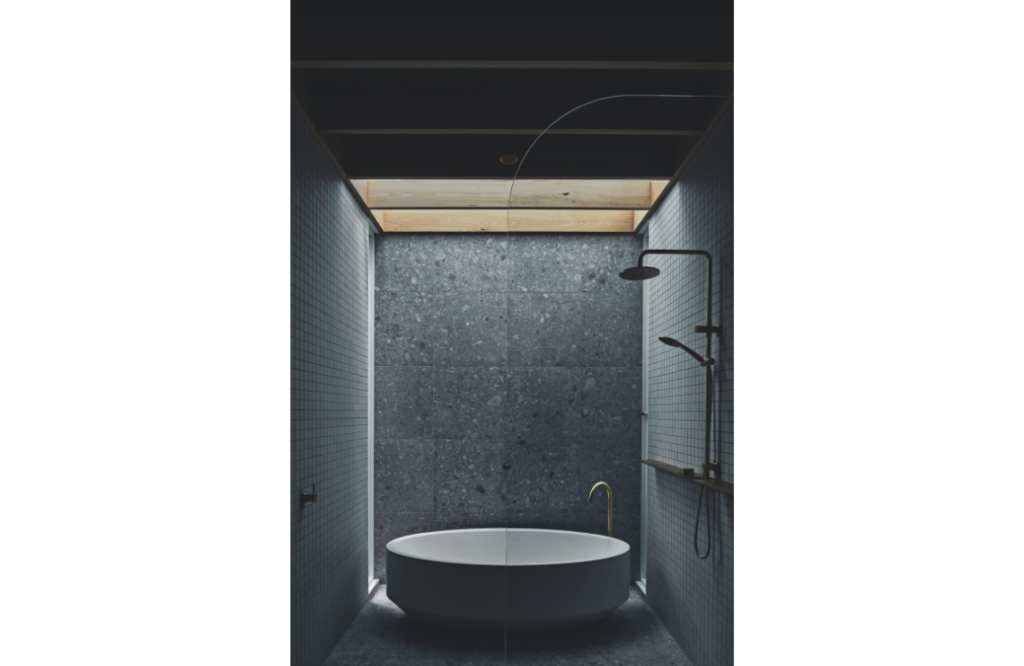
For Michael and Adi, choosing their favourite element was easy. “We love the way we have been able to bring soft natural light into the space while maintaining the secluded, tranquil feel the clients desired,” they share.
However, the build wasn’t all smooth sailing. There was one very memorable moment in the project that stood out. It occurred when demolition was complete and only the bones of the home remained. “A council building inspector arrived said, ‘Hey! You guys need a planning permit. This is a heritage building. Stop all works,’” recalls Adi. “The clients and the builder all turned white, while Michael calmly and confidently said, ‘I’m not sure that is the case.’ After the longest 15 minutes of second-guessing ourselves and waiting for the inspector to check the records, he finally came back and said, ‘Sorry wrong house, no need to stop the works.’”
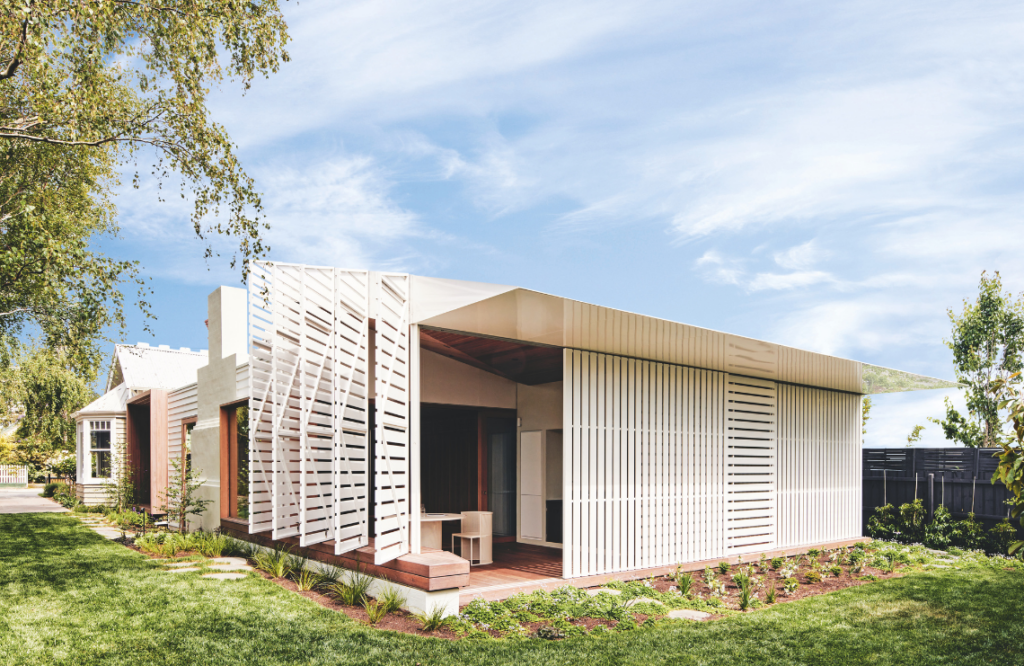
The project was a collaborative effort between architect, landscape consultant, structural engineer, builder and landscape contractor. Michael and Adi say key to the success of the project was the unification between the existing structure and the proposed design, between period and contemporary. “The undeniable character of old buildings like this provides an indelible foundation on which architecture can avoid whimsy and needless extravagance,” they say.
Now that the journey is over, the owners are thrilled with the final result. “The alterations have given us a house with a more peaceful, calm and grounded feel,” they enthuse.




















